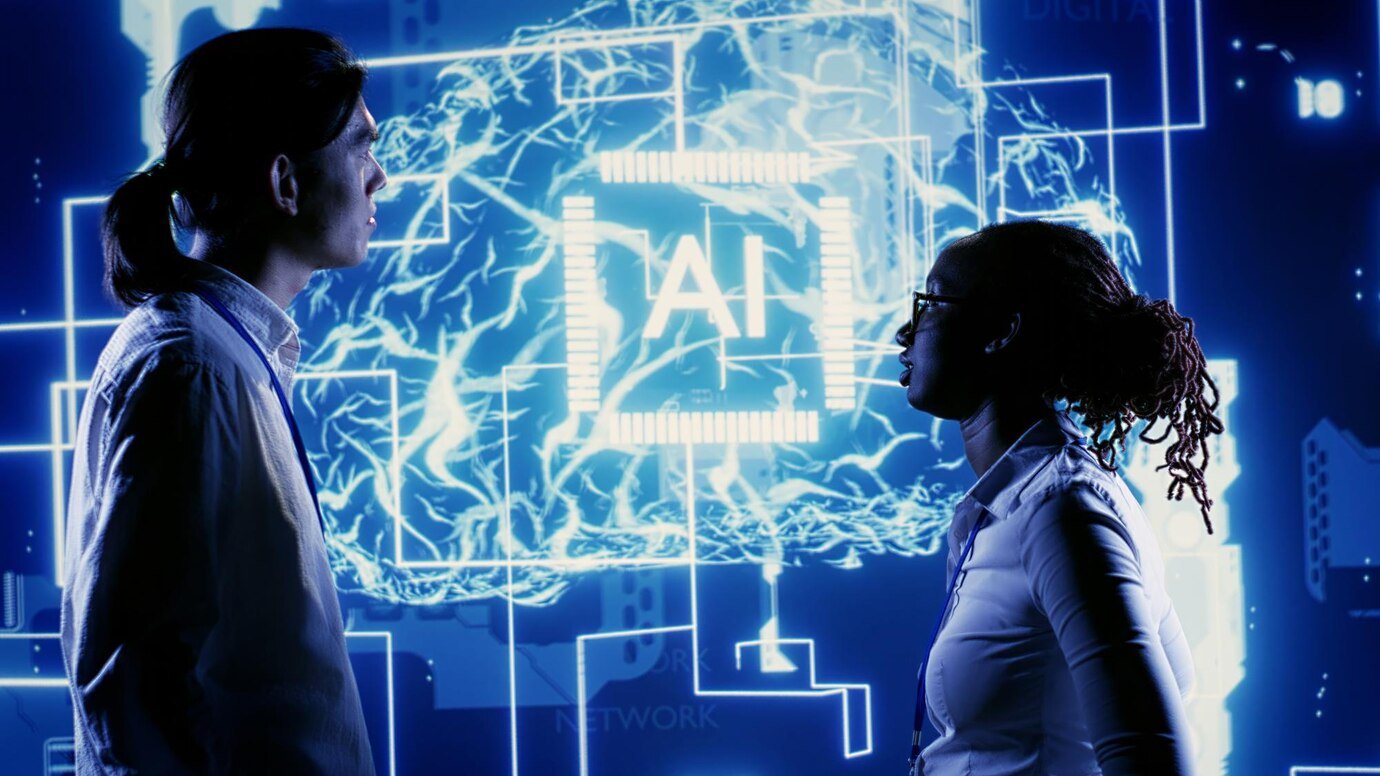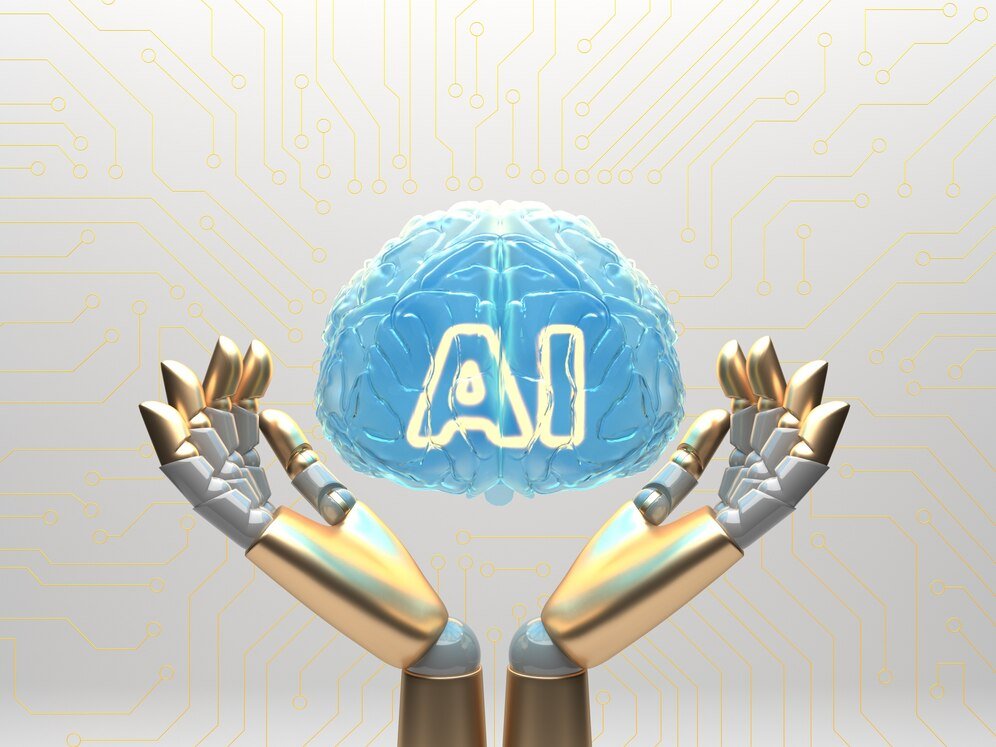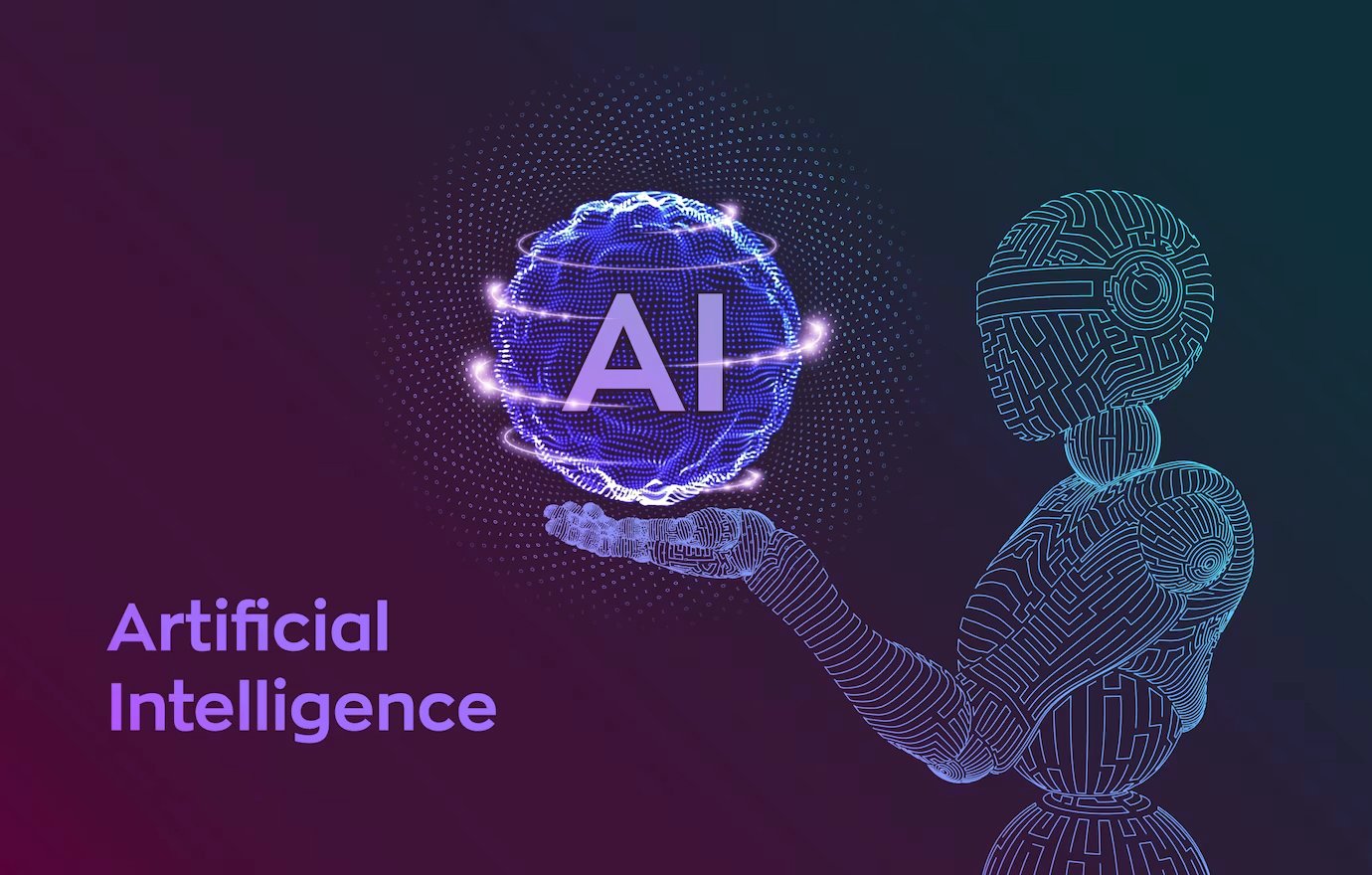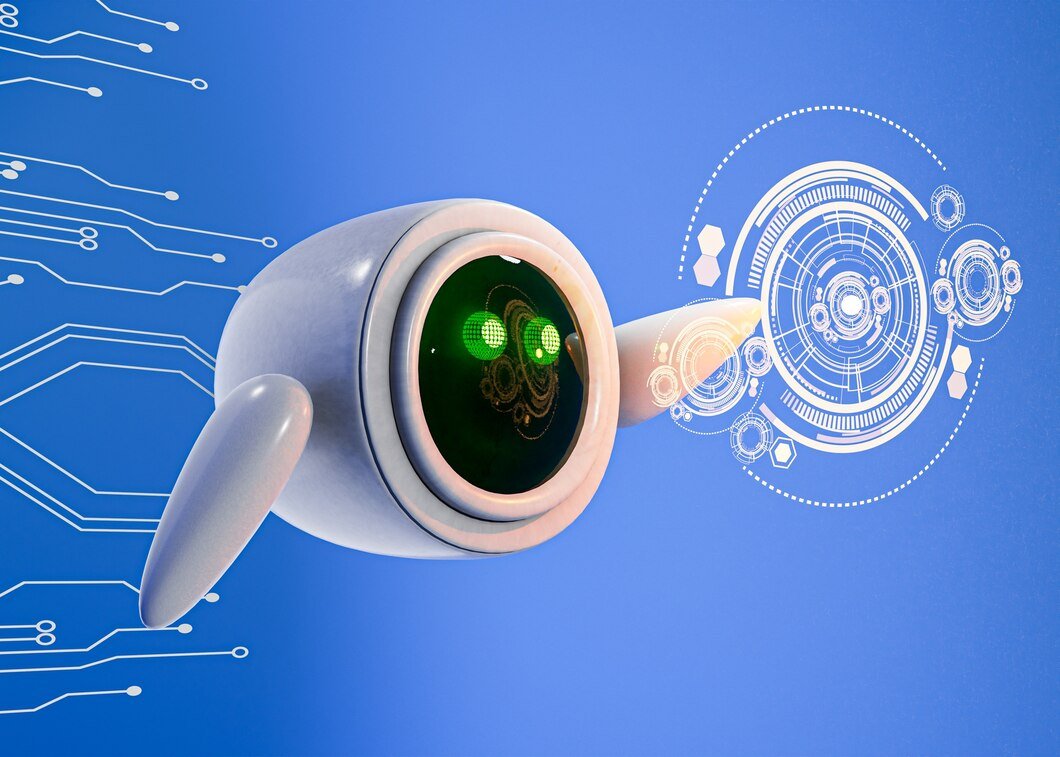
Everything to know about AI Artificial intelligence Definition, Uses, Tools and Types
What is artificial intelligence?
Artificial Intelligence (AI) is a broad field of computer science focused on creating systems capable of performing tasks that typically require human intelligence. These tasks include learning, reasoning, and problem-solving, understanding natural language, perception, and creativity. AI systems can be categorized into two main types:
- Narrow AI (or Weak AI): These systems are designed to perform a narrow task (e.g., facial recognition, internet searches, or driving a car). Most current AI applications fall into this category, where they can outperform humans at the specific tasks they’re designed for but lack the general understanding or consciousness that humans possess.
- General AI (or Strong AI): This refers to systems that possess the ability to understand, learn, and apply intelligence across a wide range of tasks, similar to human cognitive abilities. Such systems would have the capacity for general reasoning, problem-solving, and learning, allowing them to perform any intellectual task that a human being can. General AI remains a theoretical concept and has not been achieved as of my last update.
AI technologies utilize various methodologies, including machine learning (ML), deep learning, neural networks, natural language processing (NLP), and computer vision, to process data, recognize patterns, and make decisions. AI has applications in numerous fields, including healthcare, finance, automotive, robotics, entertainment, and customer service, significantly impacting society and the economy by automating tasks, enhancing productivity, and solving complex problems.
Artificial intelligence examples

Artificial Intelligence (AI) is integrated into various aspects of daily life and industry, often operating behind the scenes to enhance efficiency, accuracy, and user experiences. Here are some examples of AI applications across different sectors:
- Virtual Assistants and Chatbots: Siri, Alexa, Google Assistant, and chatbots on websites use AI to understand natural language, interpret requests, and provide responses or actions based on user queries.
- Recommendation Systems: Platforms like Netflix, YouTube, Spotify, and Amazon use AI to analyze your past behavior, preferences, and similar user profiles to recommend movies, videos, music, or products you might like.
- Autonomous Vehicles: Self-driving cars and drones employ AI to interpret sensory data, navigate through environments, make decisions on the move, and learn from various driving conditions to improve over time.
- Facial Recognition Systems: Used in Smartphone security, law enforcement, and personal identification, these systems leverage AI to identify individuals based on facial features.
- Healthcare Diagnostics and Personalized Medicine: AI algorithms can analyze medical images, genetic information, and other health data to assist in diagnosing diseases, predicting outcomes, and personalizing treatment plans to the individual patient’s genetic makeup and lifestyle.
- Finance and Trading: AI systems analyze market trends, financial news, and data to predict stock movements, manage investment portfolios, and detect fraudulent activities.
- Manufacturing and Robotics: In manufacturing, AI-driven robots perform tasks such as assembling, testing, and packaging products. AI optimizes production processes, predictive maintenance, and supply chain management.
- Natural Language Processing (NLP): Tools like Grammarly or Google Translate interpret, understand, and generate human language, offering grammar assistance or language translation services.
- Smart Home Devices: AI is used in smart thermostats, lights, and security systems to learn the homeowner’s habits and adjust settings accordingly for convenience, energy efficiency, and safety.
- Agriculture: AI-powered systems analyze data from various sources (satellites, drones, sensors) to optimize planting, crop management, and harvesting, aiming to increase efficiency and yields.
- Gaming: AI is used to create more realistic and challenging non-player characters (NPCs), enhance game physics, and procedurally generate content, making each player’s experience unique.
- Education: Adaptive learning platforms use AI to personalize the learning experience, identifying strengths and weaknesses, and adapting content to fit the individual learner’s pace and style.
These examples represent just a fraction of AI’s current applications, with the field continuously evolving and expanding into new areas.
AI on the workplace

AI in the workplace transforms how businesses operate, enhancing efficiency, productivity, and innovation across various sectors. Its integration into work environments is multifaceted, affecting both the nature of jobs and how they’re performed. Here’s an overview of how AI works in the workplace:
Automation of Routine Tasks
AI excels at automating repetitive, rule-based tasks that don’t require complex decision-making. For example, data entry, scheduling, and basic customer service inquiries can be handled by AI systems, freeing up human employees to focus on more strategic, creative, or interpersonal tasks.
Decision Support and Analytics
AI-powered analytics and decision-support tools help businesses make more informed decisions by analyzing large volumes of data more quickly and accurately than humans. These systems can identify trends, forecast outcomes, and provide recommendations, aiding in areas like market analysis, financial planning, and risk management.
Personalization and Customer Service
AI technologies like chat bots and virtual assistants provide personalized customer service at scale. They can handle a wide range of customer queries 24/7, offering immediate responses and escalating more complex issues to human representatives. Recommendation engines, another AI application, tailor product or content suggestions to individual user preferences, enhancing customer satisfaction and engagement.
Human Resource Management
AI streamlines HR processes by automating candidate screening, facilitating onboarding, and personalizing training programs. AI-driven analysis of employee data can also help identify patterns related to productivity, engagement, or turnover, informing strategies to improve workplace culture and employee retention.
Enhanced Security
AI systems enhance workplace security through real-time monitoring and analysis of physical and cyber environments. For example, AI can detect unusual network activity indicating a potential cyber threat, or analyze video footage from security cameras to identify unauthorized access to restricted areas.
Collaborative Robots (Cobots)
In manufacturing and warehousing, AI-enabled robots work alongside humans to perform tasks ranging from assembly to picking and packing goods. These collaborative robots (cobots) are designed to operate safely in close proximity to humans, enhancing productivity and reducing the physical strain on workers.
Predictive Maintenance
AI helps in predicting equipment failures before they occur, especially in manufacturing and transportation industries. By analyzing data from sensors on machines, AI algorithms can identify patterns indicative of imminent breakdowns, allowing for maintenance to be scheduled proactively, thereby minimizing downtime and extending equipment lifespan.
Challenges and Considerations
While AI brings numerous benefits, it also presents challenges, including job displacement concerns, ethical considerations regarding privacy and bias, and the need for employees to adapt to new roles and skills. Businesses implementing AI must navigate these challenges thoughtfully, ensuring they leverage the technology in a way that augments human work and promotes a positive workplace culture.
In conclusion, AI’s role in the workplace is to augment human capabilities and streamline operations. By taking over routine tasks, providing insights through data analysis, and enhancing customer and employee experiences, AI allows businesses to focus more on innovation, strategic decision-making, and creating value.
What is artificial general intelligence (AGI)?

Artificial General Intelligence (AGI), also known as Strong AI, is a form of artificial intelligence that is capable of understanding, learning, and applying its intelligence across a wide range of tasks, in a manner indistinguishable from human intelligence. Unlike narrow AI, which is designed to perform specific tasks with expertise (such as language translation, facial recognition, or playing a particular game), AGI would have the ability to learn and master any intellectual task that a human being can.
Key characteristics of AGI include:
- Learning and Reasoning: AGI can learn new tasks without being explicitly programmed for them. It can understand concepts and apply reasoning to solve problems across different domains.
- Transfer Learning: It can transfer knowledge and skills learned in one context to another, much like how a human can apply problem-solving skills learned in one area to an unrelated area.
- Generalization: AGI can generalize from specific examples to broad concepts, allowing it to navigate new or unseen environments and tasks with the same ease as familiar ones.
- Adaptability: It can adapt to changing environments and goals, adjusting its strategies and approaches as needed.
- 5. Understanding Natural Language: AGI can comprehend and generate human language, enabling it to communicate effectively with humans, understand texts, and interpret complex instructions.
- Creativity and Innovation: It can exhibit creativity, generating new ideas, concepts, or solutions to problems that are novel and valuable.
The development of AGI represents a significant challenge and is a subject of ongoing research and debate within the AI community. Achieving AGI requires breakthroughs in understanding human cognition and significant advancements in AI methodologies. Furthermore, the prospect of creating machines with human-like intelligence raises a host of ethical, philosophical, and safety considerations. These include concerns about autonomy, decision-making, the potential for unintended consequences, and the impact on society and employment.
As of my last update, AGI remains a theoretical concept and has not been achieved. However, the pursuit of AGI continues to drive research in AI, cognitive science, and related fields, with the goal of not only creating machines that can think and learn like humans but also ensuring that they do so in a way that is beneficial to humanity.
The all Types of AI

Artificial Intelligence (AI) can be categorized in several ways, reflecting its capabilities, functionality, and theoretical advancements. Here are some common ways to categorize AI, which help in understanding its breadth and potential:
- Based on Capabilities
Narrow AI (Weak AI): This type of AI is designed to perform a narrow task (e.g., facial recognition, internet searches, driving a car) and operates under a limited, pre-defined range or set of conditions. Most AI in use today is Narrow AI, which excels at its specific tasks but does not possess understanding or consciousness.
General AI (Strong AI): AGI refers to AI with the ability to understand, learn, and apply its intelligence across a wide range of tasks, in a manner indistinguishable from human intelligence. It can generalize learning to new domains and perform any intellectual task that a human being can. AGI is a theoretical concept and has not yet been achieved.
Super intelligent AI: Beyond AGI, super intelligence refers to an AI that surpasses human intelligence across all fields, including creative, emotional, and social intelligence. It represents a hypothetical future where AI’s cognitive abilities are superior to those of humans in every relevant aspect.
- Based on Functionality
Reactive Machines: These AI systems can react to different situations but do not have memory-based functionality. They cannot use past experiences to inform future ones. IBM’s Deep Blue, which beat Garry Kasparov in chess, is an example.
Limited Memory: This type of AI can use past experiences or historical data to make current decisions. Most current AI, including those driving autonomous vehicles or making recommendations on streaming services, falls into this category.
Theory of Mind: This is a more advanced class of AI that researchers are still working towards. It would entail understanding that others have their beliefs, desires, and intentions that influence the decisions they make. This level of AI requires not just understanding but interpreting the emotional states of humans.
Self-awareness: In this category, AI systems would have a sense of self, consciousness, and awareness. These machines would understand their internal states and predict the feelings of others. This type of AI remains purely speculative and philosophical at this point.
- Based on Technology
Machine Learning (ML): AI systems with the ability to learn from data, identify patterns, and make decisions with minimal human intervention.
Deep Learning (DL): A subset of machine learning that uses neural networks with many layers (deep neural networks) to analyze various factors in large volumes of data.
Natural Language Processing (NLP): AI that can understand, interpret, and generate human language in a way that is both meaningful and useful for specific tasks.
Robotics: This involves designing, constructing, operating, and using robots, often powered by AI, to perform tasks that were traditionally done by humans.
Computer Vision: AI that can interpret and understand the visual world, converting images and videos into meaningful descriptions and actions.
These categories are not mutually exclusive and often overlap; for instance, a machine learning model might utilize NLP to understand and generate human language. The field of AI continues to evolve rapidly, with ongoing research and development expanding the possibilities of what AI can achieve.
AI beneficial or dangerous?

The impact of Artificial Intelligence (AI) on society is multifaceted, encompassing both significant benefits and potential risks. Whether AI is seen as beneficial or dangerous often depends on its application, implementation, and the safeguards put in place to mitigate its risks. Here’s a look at both sides of the coin:
Benefits of AI:
- Efficiency and Productivity: AI can automate repetitive and time-consuming tasks, increasing efficiency and productivity across various sectors, including manufacturing, logistics, and administration.
- Enhanced Decision-Making: By analyzing vast amounts of data, AI can support better decision-making in fields such as healthcare, finance, and environmental management, often identifying patterns and insights that humans might overlook.
- Innovation and Creativity: AI can drive innovation, from drug discovery and personalized medicine to new materials and energy solutions, potentially solving some of the world’s most pressing challenges.
- Accessibility and Convenience: AI improves everyday life with virtual assistants, recommendation systems, and personalized digital services, making technology more accessible and convenient.
- Safety: In scenarios ranging from autonomous vehicles to predictive maintenance of industrial equipment, AI has the potential to enhance safety, reducing human error and preventing accidents.
Potential Dangers of AI:
- Job Displacement: Automation can lead to job displacement, particularly in sectors heavily reliant on routine tasks, raising concerns about unemployment and economic inequality.
- Bias and Discrimination: AI systems can perpetuate and even amplify biases present in their training data, leading to unfair or discriminatory outcomes in areas like hiring, law enforcement, and lending.
- Loss of Privacy: The pervasive use of AI in surveillance and data analysis can erode privacy, with systems capable of tracking, analyzing, and inferring personal details from vast amounts of data.
- Security Risks: AI systems can be exploited for malicious purposes, including cyber-attacks, autonomous drones, or automated spreading of misinformation.
- Existential Risks: Though more speculative, there’s a debate about the long-term existential risks posed by super intelligent AI, including scenarios where AI’s goals diverge from human values, leading to unintended consequences.
Balancing the Equation:
The key to maximizing the benefits of AI while minimizing its risks lies in responsible development, governance, and use of AI technologies. This includes:
Developing and enforcing ethical guidelines and standards for AI development and use.
Investing in AI research that prioritizes safety, transparency, and fairness.
Creating policies that address the social and economic impacts of AI, including education and workforce retraining programs.
Engaging in international cooperation to manage the global challenges and opportunities presented by AI.
In summary, AI holds enormous potential to benefit humanity across many domains. However, its development and deployment must be carefully managed to mitigate the risks and ensure that AI technologies are aligned with human values and societal well-being.
Learn more about AI

Learning about AI is an exciting journey that requires a mix of foundational knowledge, technical skills, and continuous exploration. Here’s a structured approach to diving into the world of artificial intelligence:
- Understand the Basics
Books: Start with accessible books on AI and machine learning concepts. Titles like “Artificial Intelligence: A Guide for Thinking Humans” by Melanie Mitchell and “Life 3.0: Being Human in the Age of Artificial Intelligence” by Max Tegmark offer great introductions.
Online Courses: Platforms like Coursera, edX, and Udacity offer introductory courses on AI and machine learning from top universities and companies. Look for courses that start with the basics, such as “AI For Everyone” by Andrew Ng on Coursera.
- Build a Strong Foundation in Mathematics and Programming
Mathematics: Focus on linear algebra, probability, statistics, and calculus. Khan Academy and MIT OpenCourseWare are excellent resources for brushing up on these subjects.
Programming: Python is the most popular programming language for AI and machine learning. Start with Python tutorials on Codecademy or learn by doing projects on HackerRank.
- Dive Deeper into Machine Learning and AI
Specialized Books: As you advance, read books like “Pattern Recognition and Machine Learning” by Christopher M. Bishop and “Deep Learning” by Ian Goodfellow, Yoshua Bengio, and Aaron Courville.
Advanced Courses: Enroll in more specialized courses in machine learning, deep learning, natural language processing (NLP), and computer vision. Andrew Ng’s Machine Learning and Deep Learning Specialization on Coursera are highly recommended.

- Engage with the AI Community
GitHub: Explore and contribute to open-source AI projects to understand real-world applications and coding practices.
Competitions: Participate in online competitions on platforms like Kaggle to practice your skills on real-world datasets and problems.
Meetups and Conferences: Join AI and machine learning meetups in your area and attend conferences to network with professionals and stay updated on the latest research and trends.
- Stay Informed and Continue Learning
Research Papers: Start reading research papers from arXiv.org to get acquainted with cutting-edge developments in AI. Tools like Papers With Code can help you find papers along with their implementation code.
Blogs and Podcasts: Follow AI research blogs by major AI labs like DeepMind, OpenAI, and Google AI. Listen to podcasts like “Lex Fridman Podcast” and “The AI Alignment Podcast” to hear from experts in the field.
- Build Projects
Personal Projects: Apply what you’ve learned by building your own AI models and projects. This could range from simple machine learning models to more complex applications like chatbots or image recognition systems.
Contribute to Open Source: Look for opportunities to contribute to open-source AI projects. This will help you gain practical experience and collaborate with others in the field.
Learning AI is a continuous process, with the field evolving rapidly. Embrace the journey, stay curious, and keep experimenting.
AI Tools

The AI landscape is rich with tools and libraries designed to facilitate the development of AI applications, ranging from machine learning and deep learning to natural language processing and computer vision. Here’s an overview of some prominent AI tools across different categories:
Machine Learning and Deep Learning Frameworks
- TensorFlow: Developed by Google, TensorFlow is a powerful library for numerical computation and machine learning. TensorFlow is particularly well-suited for deep learning and is used across industries for research and production.
- PyTorch: Developed by Facebook’s AI Research lab, PyTorch is a popular open-source machine learning library based on Torch. It is known for its flexibility, ease of use, and as a favorite among researchers for deep learning applications.
- Keras: Keras is an open-source neural network library written in Python. It is designed to enable fast experimentation with deep neural networks and can run on top of TensorFlow, Microsoft Cognitive Toolkit (CNTK), or Theano.
- Scikit-learn: An open-source machine learning library for Python, scikit-learn is widely used for traditional algorithms for classification, regression, clustering, and dimensionality reduction.
Natural Language Processing (NLP)
- NLTK (Natural Language Toolkit): NLTK is a leading platform for building Python programs to work with human language data. It provides easy-to-use interfaces to over 50 corpora and lexical resources, along with libraries for text processing for classification, tokenization, stemming, tagging, parsing, and semantic reasoning.
- spaCy: An open-source software library for advanced NLP, spaCy is designed for production use and provides an efficient way to perform tasks like named entity recognition, part-of-speech tagging, and dependency parsing.
- GPT (Generative Pre-trained Transformer): Developed by OpenAI, GPT models (such as GPT-3) are state-of-the-art for various NLP tasks, including text generation, translation, summarization, and question-answering, available through API for various applications.
Computer Vision
- OpenCV (Open Source Computer Vision Library): OpenCV is an open-source computer vision and machine learning software library. It has C++, Python, and Java interfaces and supports Windows, Linux, Mac OS, iOS, and Android. OpenCV is used for a wide range of applications, including facial recognition, object identification, and augmented reality.
- YOLO (You Only Look Once): YOLO is a popular real-time object detection system that can identify objects in images and videos rapidly, making it suitable for applications like surveillance, vehicle detection, and real-time video analysis.

Data Science and Analysis
- Pandas: A fast, powerful, flexible, and easy-to-use open-source data analysis and manipulation tool, built on top of the Python programming language.
- NumPy: A fundamental package for scientific computing with Python, providing support for large, multi-dimensional arrays and matrices, along with a large collection of high-level mathematical functions to operate on these arrays.
- Jupyter Notebook: An open-source web application that allows you to create and share documents that contain live code, equations, visualizations, and narrative text. Jupyter is ideal for data cleaning and transformation, numerical simulation, statistical modeling, data visualization, machine learning, and much more.
AI Cloud Services and APIs
- Google Cloud AI and Machine Learning Services: Offers various AI and machine learning services, including AutoML, AI Platform for custom model development, and pre-trained APIs for vision, video, translation, and natural language.
- AWS AI and Machine Learning Services: Provides a broad array of machine learning services and supporting cloud infrastructure, including SageMaker for building, training, and deploying machine learning models, and pre-built AI services for text, speech, and image analysis.
- Azure AI Services: Microsoft Azure provides various AI services, including Azure Machine Learning for more customized solutions and pre-built services like Cognitive Services for vision, speech, language, decision, and web search.
These tools and libraries are continuously evolving, with new features and capabilities being added to simplify AI development and enable more sophisticated applications. Whether you’re a beginner or an experienced developer, these tools can help accelerate your AI projects.
